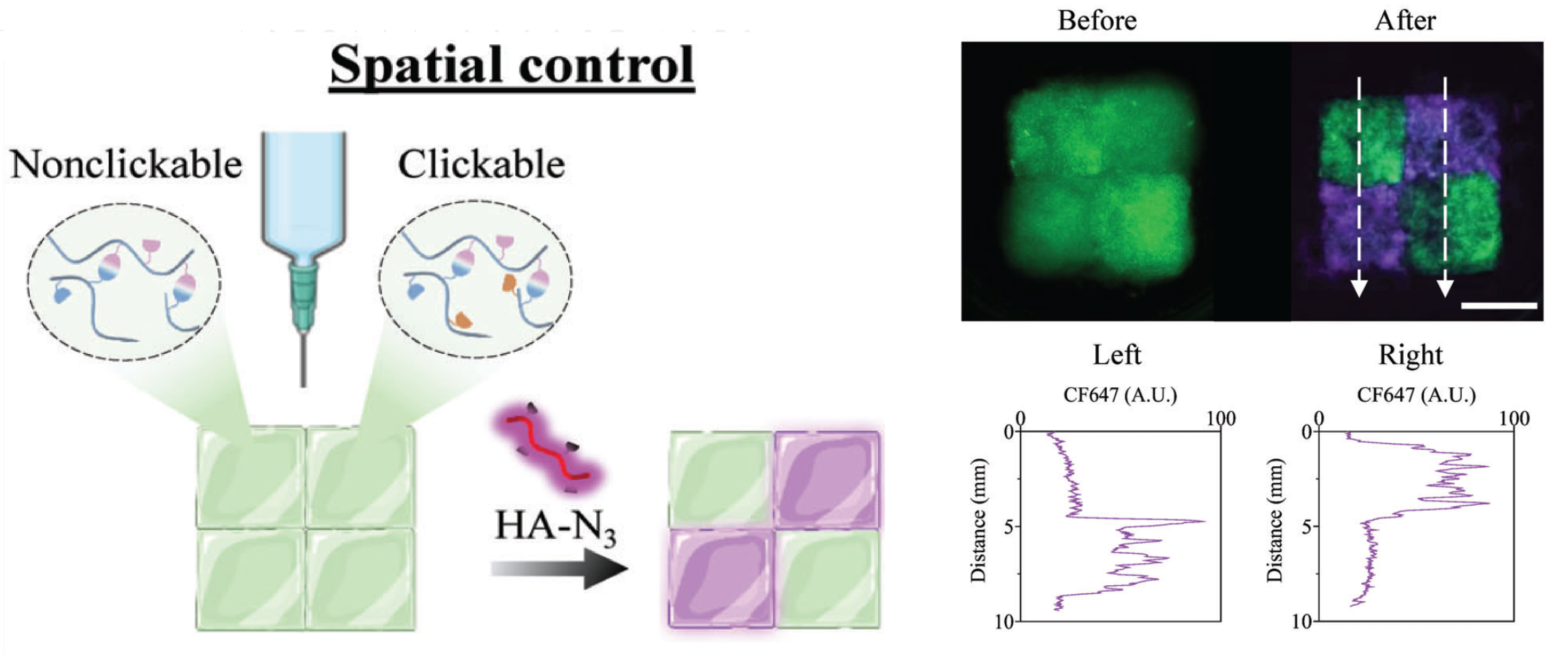3D bioprinting is a technique reminiscent of 3D printing that combines cells, growth factors, or other such biomaterials to assemble biomedical parts that imitate natural tissues, or form biofilms that can assist in the removal of pollutants. The term Bioinks refers to the precise mixture of cells and biopolymer gels used to produce these engineered live tissues. Much like the thermoplastics commonly used in conventional 3D printing, bioinks are squeezed out of printing nozzles into filaments that maintain their shape once incorporated into the main structure. Bioinks currently represent one of the most advanced tools for tissue engineering and regenerative medicine. However, most materials designed for 3D bioprinting depend on the use of sacrificial scaffolding components during production and require non-physiological stimuli for spontaneous formation (i.e., temperature, pH, or salt concentrations), resulting in bioinks with inherently limited properties. The composition and mechanical properties of many current bioinks are also not alterable post-printing.
Tournier et al. addressed these challenges in their recent Advanced Science article, using a new concept they termed clickable dynamic bioinks. These materials use printable and cyto-compatible hydrogels based on hyaluronic acid (HA) and a boronate ester-based crosslinking reaction, that can be modified via bioorthogonal “click” reactions after they are printed. The post-printing modifications they demonstrated included adjusting polymer composition, promoting cell adhesion, and a variety of hydrogel properties over time and space. In a striking demonstration of this technology, printed clickable hydrogels labeled with Biotium’s CF®488A Dye were immersed in either HA or HA-N3 labeled with Biotium’s CF®647 Dye to demonstrate the spatial controllability of this new technology. Together, these advancements suggest that 4D printing, the ability to control the composition and mechanical properties of a 3D construct in time and space, will soon be possible for bio-printed structures. This advancement to 4D capability would allow scientists to better simulate things like aging and disease development, where matrix alterations are commonly observed, in an in vitro setting. Figure. Post-printing modification of clickable dynamic hydrogels over space. “Non-clickable” and “clickable” hydrogels were printed side-by-side (both labeled with Biotium’s CF®488A Dye), before incubation with CF®647 HA-Azide for 24 h and several washes (scale bar = 5 mm). CF®647 fluorescence intensity along the dashed white arrows confirmed the local modification of clickable dynamic hydrogels. Credit: Modified from Tournier et. al https://doi.org/10.1002/advs.202300055 reproduced under the CC BY 4.0.
Figure. Post-printing modification of clickable dynamic hydrogels over space. “Non-clickable” and “clickable” hydrogels were printed side-by-side (both labeled with Biotium’s CF®488A Dye), before incubation with CF®647 HA-Azide for 24 h and several washes (scale bar = 5 mm). CF®647 fluorescence intensity along the dashed white arrows confirmed the local modification of clickable dynamic hydrogels. Credit: Modified from Tournier et. al https://doi.org/10.1002/advs.202300055 reproduced under the CC BY 4.0.
Related products
Learn more about our bright and photostable CF® Dyes, other dyes, and biotin with a full selection of reactive chemistries. This includes a full suite of options for bioorthogonal,” click”, labeling as well as for more conventional chemistries, such as succinimidyl esters for conjugation to amines.
Full Citation
Tournier, P., Saint‐Pé, G., Lagneau, N., Loll, F., Halgand, B., Tessier, A., … & Delplace, V. (2023). Clickable Dynamic Bioinks Enable Post‐Printing Modifications of Construct Composition and Mechanical Properties Controlled over Time and Space. Advanced Science, 10(30), 2300055. https://doi.org/10.1002/advs.202300055

